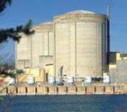
NRC's Chairman Says Safety Culture Is Improving
"One of our major challenges right now is to develop a workforce that will help us meet our safety mission over the coming decades. Over the next five years, our federal government's Office of Personnel Management projects that more than 550,000 federal employees -- one-third of the entire workforce -- will leave the government," Nuclear Regulatory Commission Chairman Dale E. Klein said April 15 as he delivered a report about the U.S. nuclear power industry's safety to the 4th Review Meeting of the Convention on Nuclear Safety in Vienna, Austria. Klein's comments covered safety culture improvements, challenges facing the industry, and progress on licensing new and safer reactors.
NRC exceeded its FY2007 goal by adding 441 new employees, he said. "Once we hire these new employees, we have to make sure they are ready to do the work. For this purpose, we have developed detailed qualification programs in both our operating reactor and new reactor offices, as well as similar programs for our inspectors in the regional offices. These qualification programs provide a structured process for new employees to learn about the NRC and their specific job function (such as project management, technical reviews, or construction inspection) through study activities, training courses, and on-the-job training. At the end of the qualification program, the staff members demonstrate their knowledge at an oral qualification board examination. We also have development programs for certain groups of staff. The Nuclear Safety Professional Development Program is a good recruitment tool for college and graduate-level students, and helps our entry-level hires learn about the agency through training and rotations. The Team Leader Development Program, Leadership Potential Program, and Senior Executive Service Candidate Development Program provide a path to develop the future leaders of the agency." The NRC's knowledge management program supports all of this, he said.
Klein also said NRC has taken several actions to address safety culture, whch was identified as an important subject at the last meeting. "We have improved our Reactor Oversight Process to incorporate safety culture more clearly in our inspections," he said. "These changes to the inspection program were designed to give us better opportunities to consider weaknesses in safety culture and to encourage licensees to take appropriate actions before significant degradation in performance occurs. Now, for each deficiency that an inspector finds, the inspector identifies whether the licensee's safety culture was a significant cause of the finding. If, over 18 months of inspection, a licensee has another safety culture issue with the same common theme, we may ask the licensee to conduct a safety culture self-assessment. For licensees with more significant performance degradation, we will expect the licensee to conduct an independent assessment of its safety culture by a third party. Then, we will conduct an independent assessment of the licensee's safety culture. This process was first tested at the Palo Verde plant at the end of 2007.
"We also revised the inspection procedure that focuses on problem identification and resolution to allow NRC inspectors to have the option to review licensee self-assessments of safety culture when selecting samples for their problem identification and resolution inspection. Finally, when inspection teams review licensees' responses to operational events, they now consider contributing causes related to safety culture as part of their efforts to fully understand the circumstances surrounding an event."
Klein said NRC has also improved its own safety culture. NRC's largest gains are in communication, mission and strategic planning, employee engagement, recruiting, developing and retaining staff, and management leadership, he said. "Areas we still need to work on include workload and stress, knowledge transfer, and the use what the NRC calls the Differing Professional Opinions Program."
Three major challenges still facing the agency are responding to generic safety issues, developing a qualified work force for the future, and licensing new reactors while ensuring the safety of the operating fleet, he said.